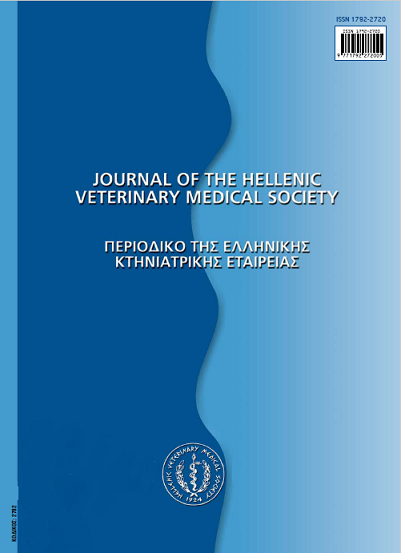Microbiological hazards at several stages of production and distribution of cooked sausages
Abstract
Fifty one (51) samples of several types of cooked sausage paste, prepared by two meat factories in N. Greece were examined. TPC of these samples ranged between 5,3-6,3 Log10CFU/g. Coliforms were regularly present reaching populations of 93->2.400 MPN/g and lactic acid bacteria ranged between 5-6,3 Log10CFU/g. L. monocytogenes was detected in 56 and 38,4% of the samples collected in each factory. E. coli was detected in 20 and 16,6%, and Salmonella spp in 12 and 16,6% respectively. Neither pathogens nor coliforms were detected in 51 samples of cooked sausages originated from the same pastes examined before. No recovery of any injured cells of the pathogenic bacteria and coliforms was observed after their storage at 4°C for 20 days. TPC of the cooked sausage samples, after thermal treatment, ranged between 3-4,7 Log10CFU/g and consisted mainly of lactic acid bacteria (range <2-4,5 Log10CFU/g) and sporeformers (range 3-4,5 Log10CFU/g). After 20 days storage at 4°C the TPC and lactid acid bacteria counts of the cooked sausages, increased by <1 Log. We also examined 16 surface and center samples of cooked sausages and meat products without casings, consisting of big meat pieces (bacon, smoked ham,etc). Surface TPC ranged between 5-5,3 Log10CFU/g and from the center of the meats they ranged between 2-3,5 Log1 0CFU/g. Coliforms, E. coli, L. monocytogenes and Salmonella spp were not detected. Lactic acid bacteria were the main flora. Furthermore we examined surface samples of cooked meat products, without casings, during several stages following thermal treatment and up to storage for 24 h at 4° C, without any protective package. TPC immediately after thermal treatment were <2 Log^CFU/g, after cooling with water increased they increased at 3 Log10CFU/g and remained the same during the following 24 h storage at 4°C. Coliforms were detected in the stored products. Their populations exceeded 2.400 MPN/g on the surface of the samples after storage for a few days at 4°C. It is assumed that the flora on the surface of these products originated from the environment and the cooling water. Finally we examined 69 samples from surfaces of the slicing and packaging equipment of cooked meat products in 3 meat factories and 28 samples from 12 super markets. L. monocytogenes was detected in 6 and 14,2% of the samples that originated from the slicing blades in the factories and super markets respectively. The results of this study underline the importance of GMP for the prevention of contamination of cooked sausages with pathogens and the control of the growth of the spoilage bacteria population which minimize the self life of these products. This is especially true after thermal treatment during peeling and slicing.
Article Details
- Come citare
-
SERGELIDIS (Δ. ΣΕΡΓΚΕΛΙΔΗΣ) D., ABRAHIM (Α. AMIN) A., SARIMVEI (Α. ΣΑΡΗΜΒΕΗ) A., & GENIGEORGIS (Κ. ΓΕΝΗΠΩΡΓΗΣ) C. (2018). Microbiological hazards at several stages of production and distribution of cooked sausages. Journal of the Hellenic Veterinary Medical Society, 53(3), 201–218. https://doi.org/10.12681/jhvms.15375
- Fascicolo
- V. 53 N. 3 (2002)
- Sezione
- Research Articles

Questo lavoro è fornito con la licenza Creative Commons Attribuzione - Non commerciale 4.0 Internazionale.
Authors who publish with this journal agree to the following terms:
· Authors retain copyright and grant the journal right of first publication with the work simultaneously licensed under a Creative Commons Attribution Non-Commercial License that allows others to share the work with an acknowledgement of the work's authorship and initial publication in this journal.
· Authors are able to enter into separate, additional contractual arrangements for the non-exclusive distribution of the journal's published version of the work (e.g. post it to an institutional repository or publish it in a book), with an acknowledgement of its initial publication in this journal.
· Authors are permitted and encouraged to post their work online (preferably in institutional repositories or on their website) prior to and during the submission process, as it can lead to productive exchanges, as well as earlier and greater citation of published work.




